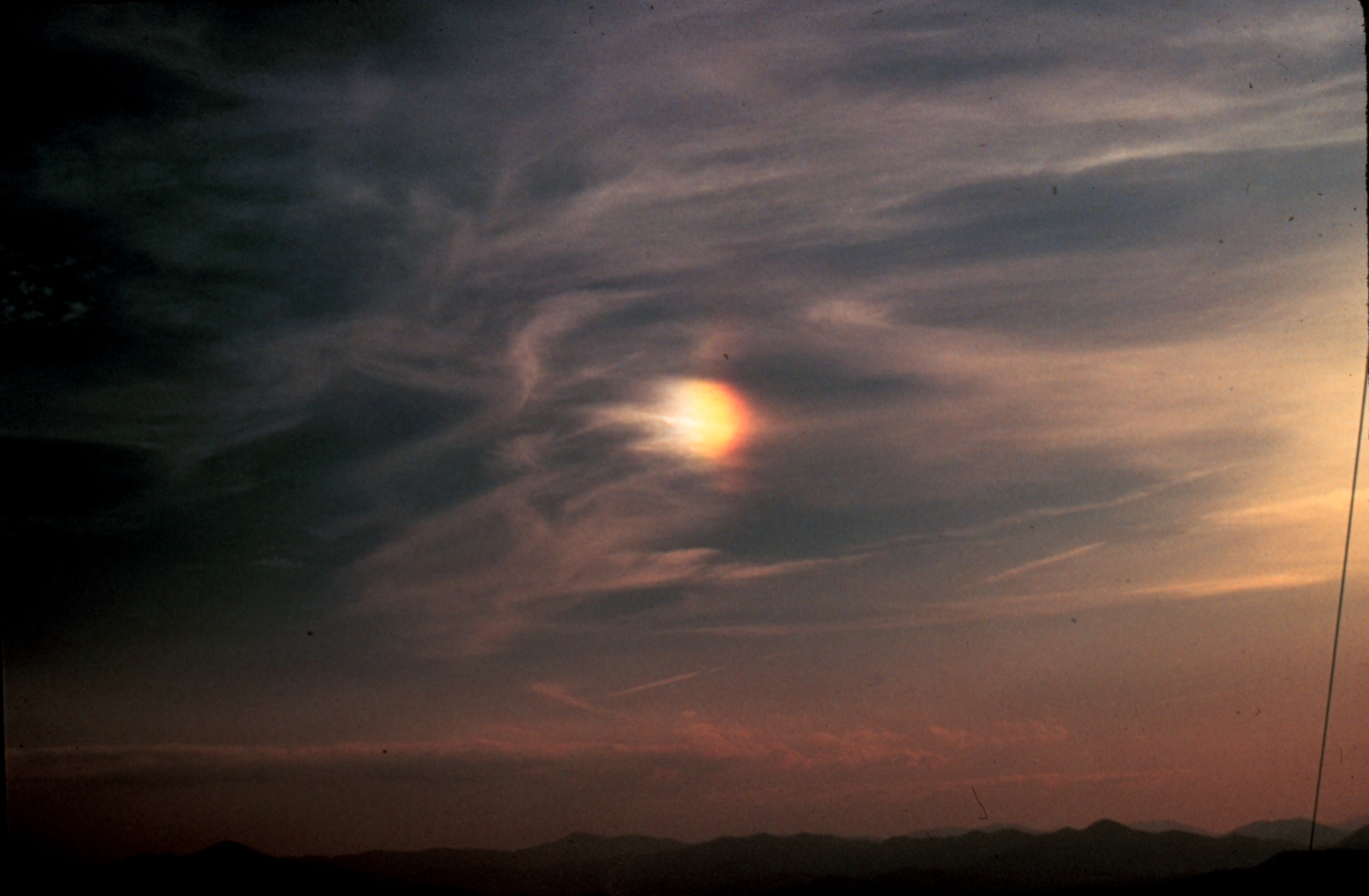Sun and Moon
Even these have been mistaken for UAP on occasion. The Sun (magnitude –26.74) is misidentified most often due to optical reflections of its light. Called Mock Suns, these can be viewed on cloud to the side of the actual sun. The sun can sometimes look strange just by shining through high, thin cloud and appearing opalescent. The Moon especially when full (magnitude –12.74) is a surprisingly common source of UAP.
An optical illusion, which is still not fully understood, occurs when it is close to the horizon. Whilst it is no closer than when at its zenith, it does appear appreciably larger, and due to atmospheric factors (as with stars) can take on strange shapes and a deep orange colour. If it enters cloud it will slowly alter shape, as it is covered part by part. This too can lead to mistaken identity. There are even reflections that can be caused by the light of the moon shining on ice particles in clouds, much as with `mock suns’. These may look like fuzzy patches or even rainbows.
Update 2014: For the French readers, here below is a link to a C.N.E.G.U’s document, from 1994 and updated in 2010 (http://cnegu.info/) regarding mis-identifications with the Moon:
“The Moon and the SAROS’ cycle”, is a a very thorough analysis which allowed to demonstrate that many alleged UFO cases in a French specific area were the result of the observation of this celestial body under special conditions.
http://sd-2.archive-host.com/membres/up/28066944658026803/Saros_1976.pdf
Telltale signs: Again, relatively slow movement (although the moon does move several times faster than the stars and can be seen to do so even over a period of minutes). Duration may be up to an hour or so, but that of any atmospheric distortion effects will be much more transitory. The orange/yellow colouration and approximate round shape are also useful clues.
Resources: It is fairly simple to check the position of the sun and moon by reference to astronomical computer programs, charts and almanacs. Diaries and some newspapers indicate lunar phases. However, astronomical computer programs provide the easiest means to acquire precise spatial data for these bodies. Always check the precise position of the moon at the time of a sighting if you note that it was full and the conditions of the sighting suggest such an explanation as a possibility.
e.g.: http://www.astronomy.com/asy/stardome/default.aspx
Atmospherics optics (incl. Mock suns):
http://www.atoptics.co.uk/halo/common.htm
